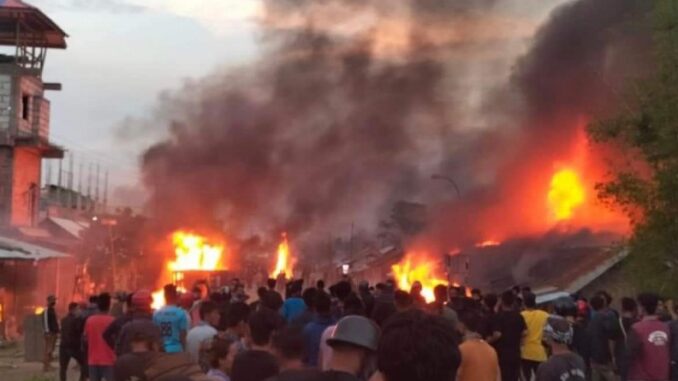
More than a month has passed but Manipur is far from being stable. Despite forces being deployed and several high-level meetings by Chief Minister N Biren Singh and Home Minister Amit Shah, the clashes only stopped for a brief period but then there have been sporadic incidences of violence. In a fresh incidence of clashes, two civilians were injured as mobs clashed with security forces overnight in Imphal town and attempts were made to torch the houses of BJP leaders. Days before, Union Minister RK Ranjan Singh’s house was torched. Army, Assam Rifles and Manipur Rapid Action Force have been deployed in the state to halt rioters from congregating. More than 100 people have lost their lives in the ethnic violence between Meitei and Kuki community people in Manipur that broke out a month ago. The state government has imposed a curfew on 11 districts and banned internet services in a bid to stop the spread of rumours in the state.
Meitei and Kuki Community
Meiteis community account for about 53 per cent of Manipur’s population and lives mostly in the Imphal Valley. On the other hand, tribals – Nagas and Kukis – constitute another 40 per cent of the population and reside in the hill districts. Clashes first broke out on May 3 after a ‘Tribal Solidarity March’ was organised in the hill districts to protest against the Meitei community’s demand for Scheduled Tribe (ST) status.
How Did The Clashes Begin?
On May 3, members of the Kuki and Naga tribes launched a protest against the possible extension of their benefits to the dominant Meiteis. For over a decade, the Meitei community has been advocating for special privileges, and their cause received a boost last month when the Manipur High Court recommended that the government consider their demands and set a deadline of mid-May. As Meiteis constitute half of Manipur’s population, granting them quotas would provide them with educational and employment opportunities currently reserved for Kukis and Nagas. Traditionally, Meiteis have resided in the more prosperous valley region of Manipur, which accounts for 10% of the state’s area. This has granted them better access to employment and economic prospects. On the other hand, Nagas and Kukis inhabit underdeveloped hills. The developmental disparity that favours the valley over the hills has been a source of contention and rivalry between these ethnic groups.
What Triggered The Clashes?
Until recently, the different groups in Manipur coexisted harmoniously, but recent events have exposed old tensions. The border between Manipur and Myanmar stretches for nearly 400 kilometres, and the coup in Myanmar during 2021 resulted in a large influx of refugees into Manipur. The Kukis, who share ethnic ties with Myanmar’s Chin tribe, caused concern among the Meiteis that they would be outnumbered by the arrival of these refugees. In a separate incident, the state government initiated a campaign in February to remove tribal communities from forested areas in the hills, claiming that they had encroached upon government land. This led to anger and frustration among the tribal people, who felt they were being forcibly displaced from their homes. This worked as a spark and the quota row added fuel to the fire leading to violence.
Bureau Report
Leave a Reply